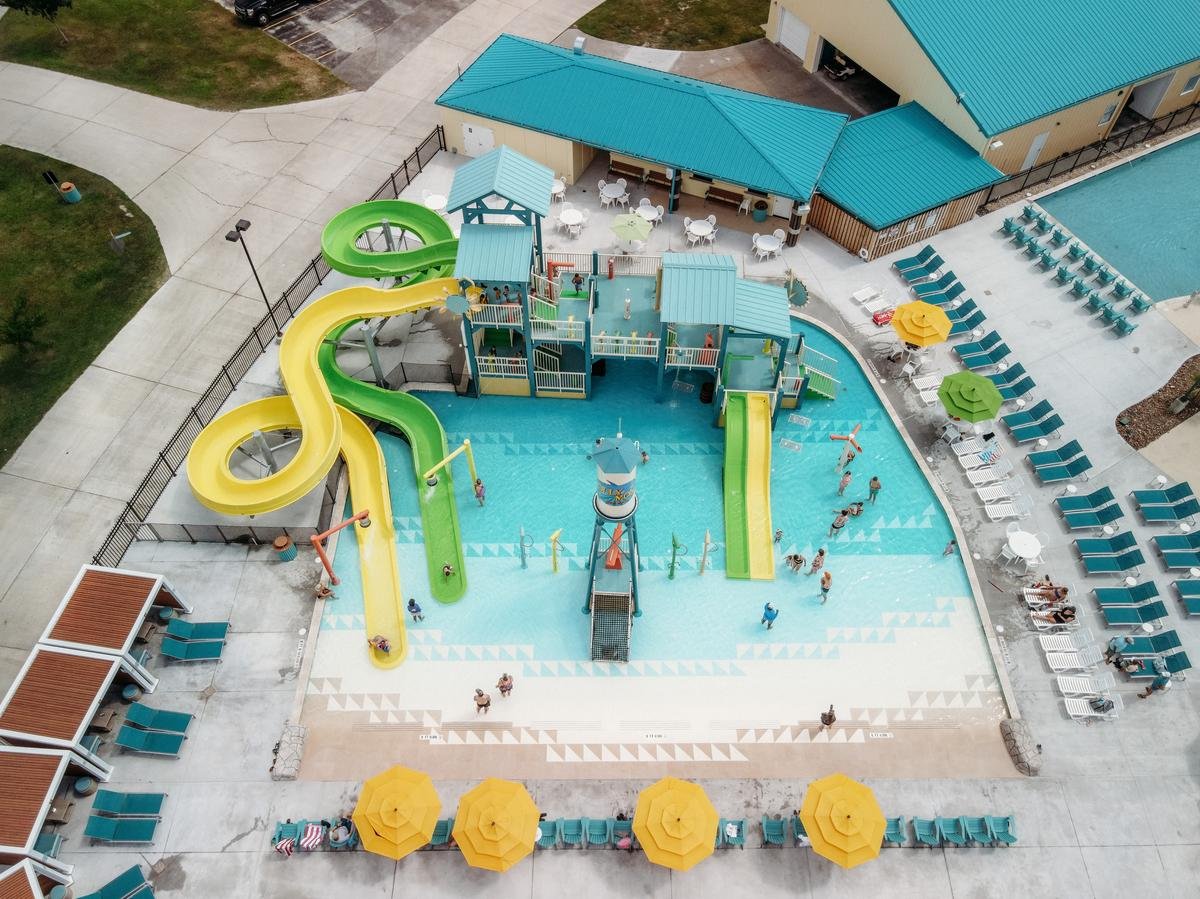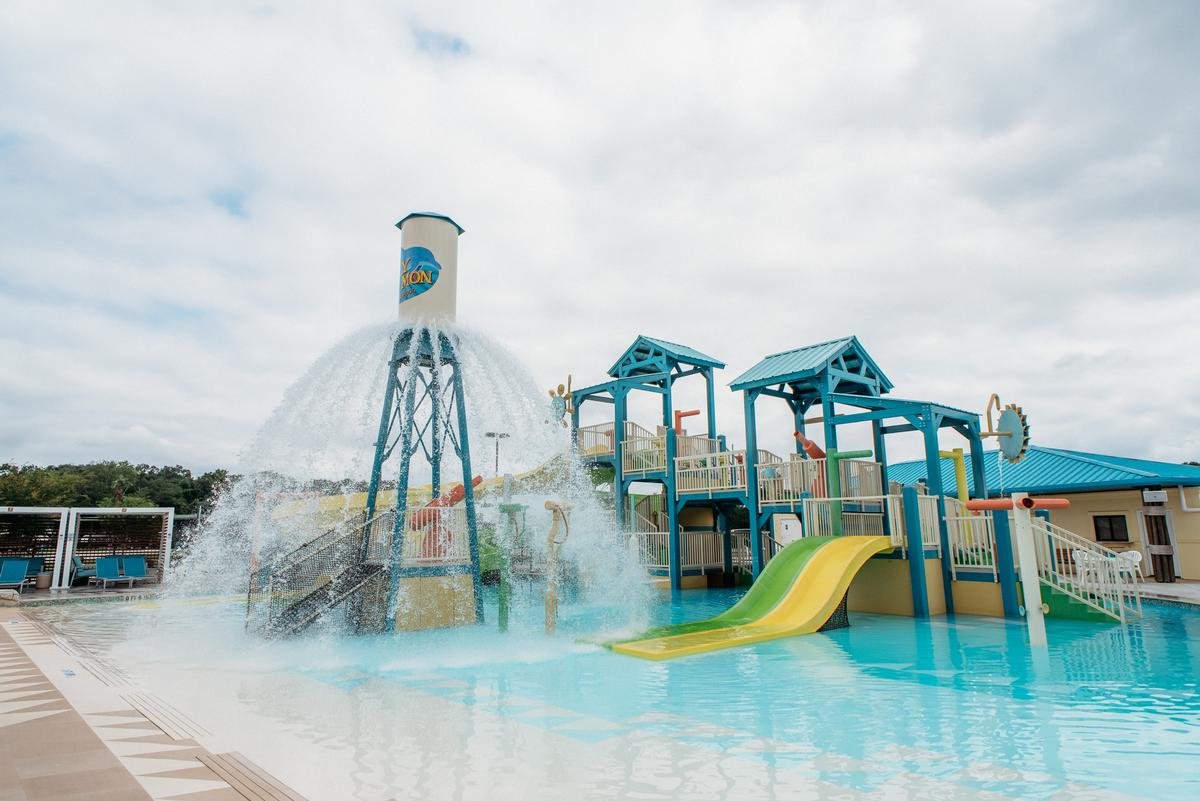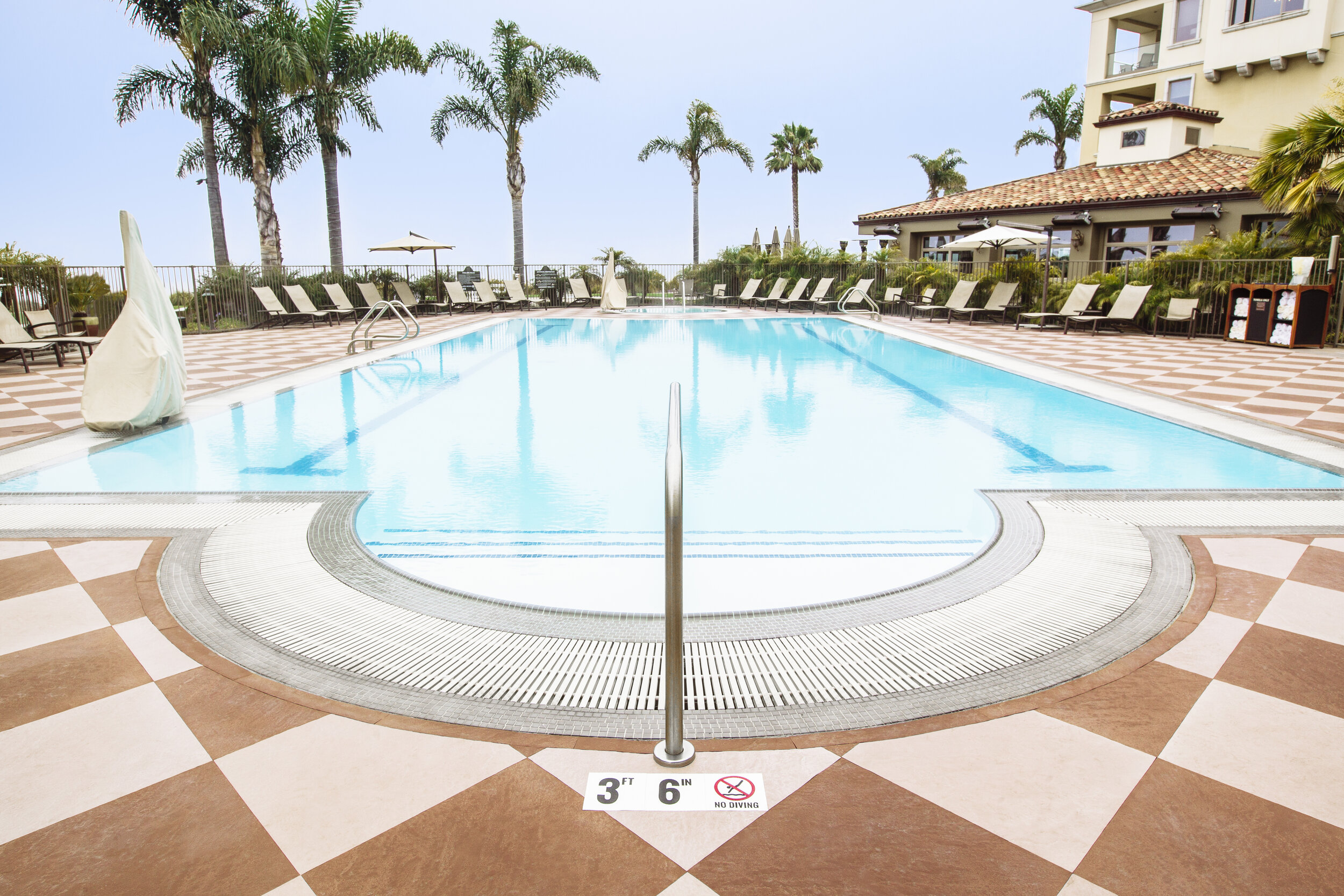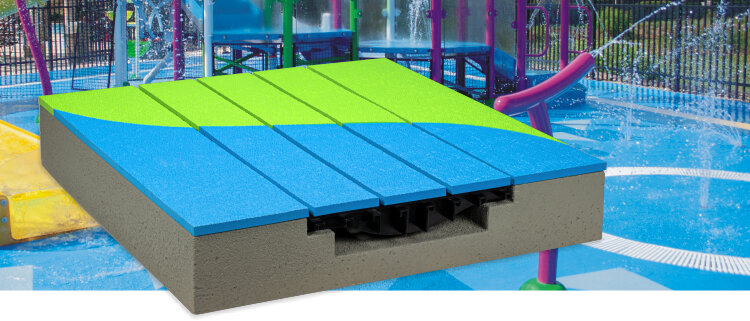Camp Margaritaville in Breaux Bridge, LA features nearly 4,000 sq ft (370 sq m) of Life Floor at the zero-depth entry pool in an elegant triangle gradient pattern.
VISUAL SIGNALS FOR INCLUSIVE AQUATICS
When state codes allow submerged applications to feature colors on the pool bottoms, zero-depth entries can incorporate visual signals for accessibility that show the depth of water is increasing.
At this location, sandy colors symbolize the beach and water tones gradually darken as the depth increases. This design choice is aesthetically pleasing while helping guests navigate the space more confidently.
HIDDEN DRAINS
A Life Floor DalLUX Drainage System by Daldorado is located at the amenity’s entry point to provide both design continuity and added safety. This type of drain positioned within a design has channels that run along the surface with strips of Life Floor adhered to them. Drainage isn’t impeded and tiles can incorporate custom elements even over the drains themselves.
Life Floor’s heat dispersion is especially useful in the Louisiana climate where temperatures reach over 90°F (32°C). Destinations with high UV Indexes often find that metal drain grates can cause burns due to heating up when not submerged. Our product integration partnership with Daldorado ensures that guests are better protected in comparison to traditional metal drains.
The photo below shows the drainage system exposed prior to Life Floor installation.
Playful FEATURES
The aquatic play structure and pool floor boast InterActive Play features that promote social engagement. From friendly water battles to collaborative play opportunities that produce thrilling water effects, interactive elements create opportunities for connection and shared experiences. Engineered with beloved kid-friendly technology, such as light-up bars indicating a feature’s “charging status,” buttons, pull ropes, touch sensors, and more, these features captivate guests longer than conventional open water flow designs.
curating THEMATIC FUN
Beach-inspired designs with bright, tropical elements are becoming increasingly popular in the aquatics industry. Many vacation-goers directly associate beaches and ocean vistas with relaxation, but importing sand isn’t sustainable and presents a challenge for filtration systems.
By using Life Floor to intone colors and gradients on the surface, venues can spark imaginations and create a space that reflects a relaxing day at the beach.
To learn how you can elevate the look and feel of your facility’s zero-depth entry amenity, begin a conversation with one of our account executives today. We can help you navigate your state’s code requirements for aquatic surfacing and support you in enhancing the safety, design, and accessibility at your facility.


















